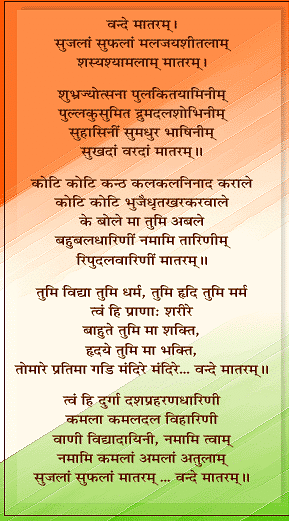National Symbols of India with Name and its Significance | SSC CGL Tier 2 - Study Material, Online Tests, Previous Year PDF Download
National Symbols of India: A Reflection of Heritage and Pride
India's rich heritage and national pride find embodiment in its diverse symbols, representing the nation's culture and traditions on a global scale. Understanding the significance of these 17 national symbols is imperative for every citizen, as they hold immense national importance.
Catalog of National Symbols of India with Designations
The following table enlists the 17 National Symbols of India, each carrying distinct meanings and chosen to symbolize the country, evoking a sense of pride and unity among its people.

Importance of National Symbols in India
National symbols play a crucial role in fostering a sense of identity, unity, and pride among citizens. They encapsulate the nation's values, history, and cultural diversity. Understanding and respecting these symbols contribute to the collective spirit that binds the people of India together, transcending regional and linguistic differences.
17 Symbols Representing India's Identity and Legacy
India's cultural diversity and historical legacy are encapsulated in its 17 national symbols, each holding unique significance. Let's delve into a detailed exploration of these symbols that showcase the essence of the nation.
1. National Animal of India - The Tiger
The Tiger, known for its regal grace and immense strength, symbolizes India's rich biodiversity. With eight native species, India harbors more than half of the world's tiger population, highlighting its commitment to wildlife conservation.

2. National Emblem of India - The Lion Capital
Adorning the summit of an Ashokan pillar in Sarnath, the National Emblem features four lions, an elephant, a horse, a bull, and a lion spaced around the Dharma Chakra. Designated on January 26, 1950, it represents India's sovereignty and unity.

3. National Flag of India - Tiranga
The multicolored national flag, known as "Tiranga," embodies India's freedom and sovereignty. With three colors symbolizing different aspects, the flag includes a central Wheel of Law, emphasizing the nation's commitment to justice.

4. National Anthem of India - Jana-gana-mana
Composed by Rabindranath Tagore, the national anthem, "Jana-gana-mana," was first performed in Calcutta in 1911. With five stanzas, it resonates as a melodic anthem of unity, capturing the spirit of the nation.

5. National Currency of India - The Rupee
Monitored by the Reserve Bank of India, the Indian Rupee (INR) serves as the national currency, created by Udayakumar Dharmalingam. It is a symbol of the country's economic identity.

6. National Calendar of India - Saka Calendar
Reflecting the history and golden era of India, the Saka Calendar encompasses twelve months. Each month, from Chaitra to Phalguna, signifies cultural richness, contributing to the national identity.

7. Oath of Allegiance of India
The Oath of Allegiance serves as the national pledge, fostering peace, unity, and brotherhood. It plays a crucial role in maintaining the nation's tranquility.
8. National Bird of India - The Indian Peacock
Recognized as the national bird, the Indian Peacock (Pavo cristatus) symbolizes grace, pride, spirituality, and beauty. It holds a significant place in Indian mythology, embodying monarchy and divinity.

9. National Flower of India - The Lotus
The Lotus, scientifically known as Nelumbo nucifera, is the national flower, symbolizing spirituality, wealth, knowledge, and purity. Revered in Indian culture, it represents the purity of heart and mind.

10. National Fruit of India - The Mango
Known as the "King of Fruits," the mango holds a special place in Indian cuisine. Its ripe, meaty texture and delicious taste make it a symbol of India's tropical richness.

11. National Sport of India
While India does not officially designate a national game, hockey, kabaddi, and cricket are often associated with the title. The Indian hockey team's historic success, particularly between 1928 and 1956, contributes to the sport's cultural significance.

12. National Pledge of India
The National Pledge, recited by every Indian student in school, emphasizes fundamental obligations to uphold peace, unity, and brotherhood. Rooted in the Preamble of the Indian Constitution, it reflects the commitment to national integration.

13. National Song of India - "Vande Mataram"
Penned by Bankim Chandra Chatterjee in his Bengali book "Anand Math," "Vande Mataram" is a patriotic song bursting with admiration for the motherland. It resonates as a favorite among India's independence warriors.

14. National Tree of India - The Banyan Tree
Ficus bengalensis, the Banyan tree, represents India's national tree. Known for its vast spread and ability to live and regenerate for thousands of years, it symbolizes endurance and continuity.

15. National Heritage Animal of India - The Indian Elephant
Acknowledged as the national heritage animal, the Indian Elephant faces the risk of extinction. This designation emphasizes the need for protective measures to ensure the conservation of this majestic species.

16. National Aquatic Animal of India - The Ganges River Dolphin
Declared the official aquatic animal due to a decline in populations, the Ganges River Dolphin signifies the country's commitment to protecting endangered species and preserving aquatic ecosystems.

17. National Mountain of India - Kangchenjunga
Situated in the Himalayas, Kangchenjunga, the third-highest peak globally, stands as India's national mountain. Its majestic presence represents the country's geographical diversity and natural grandeur.
These 17 national symbols collectively weave the tapestry of India's identity, reflecting its cultural richness, historical significance, and commitment to unity in diversity. Understanding and embracing these symbols foster a sense of national pride and belonging among the citizens of India.
Significance of India's National Symbols
National symbols hold immense importance as they embody a country's essence, values, and historical legacy. In the case of India, these symbols play a crucial role in shaping the nation's identity, fostering pride, and conveying its rich cultural heritage to the world. Let's delve into the significance of India's national symbols:
Representation of Identity and Values: National symbols, including the flag, emblem, flower, bird, animal, and tree, collectively represent India's unique identity. They encapsulate the country's diverse culture, storied history, and deeply-rooted values.
Promotion of Unity and Culture: These symbols serve as unifying elements, bringing together the people of India under a shared sense of identity. By promoting the country's culture and values, they contribute to a collective national consciousness.
Practical Utility: Beyond symbolic representation, national symbols serve practical purposes. The national flag, for instance, is a vital identifier for Indian ships and aircraft. The emblem finds its place on official government documents and seals, signifying authority.
Tourism and Cultural Promotion: India's national flower, bird, animal, and tree are not just symbols; they are ambassadors promoting the country's tourism and culture. They serve as iconic representations that evoke curiosity and interest worldwide.
Unity, Patriotism, and National Pride: National symbols play a pivotal role in fostering unity, patriotism, and a deep sense of national pride among Indian citizens. They act as emotional connectors, instilling a shared sense of belonging.
Deliberate Positive Image: The careful selection of national symbols aims to present India in the most positive light. Each symbol, from the lotus to the tiger, is chosen with deliberate intent. The lotus symbolizes spirituality, the tiger represents power and courage, the peacock signifies royal grace, and the banyan tree embodies immortality.
Cultural and Emotional Connections: Embodying cultural and emotional connections, these symbols go beyond mere visuals. They find expression in anthems, emblems, flags, and even animals, creating a tapestry of shared experiences and sentiments.
In essence, India's national symbols go beyond mere visual representation; they are threads that weave together the diverse fabric of the nation. Their significance lies in their ability to evoke emotions, promote unity, and project a positive image of India to the global stage.
|
1597 videos|1638 docs|920 tests
|
















